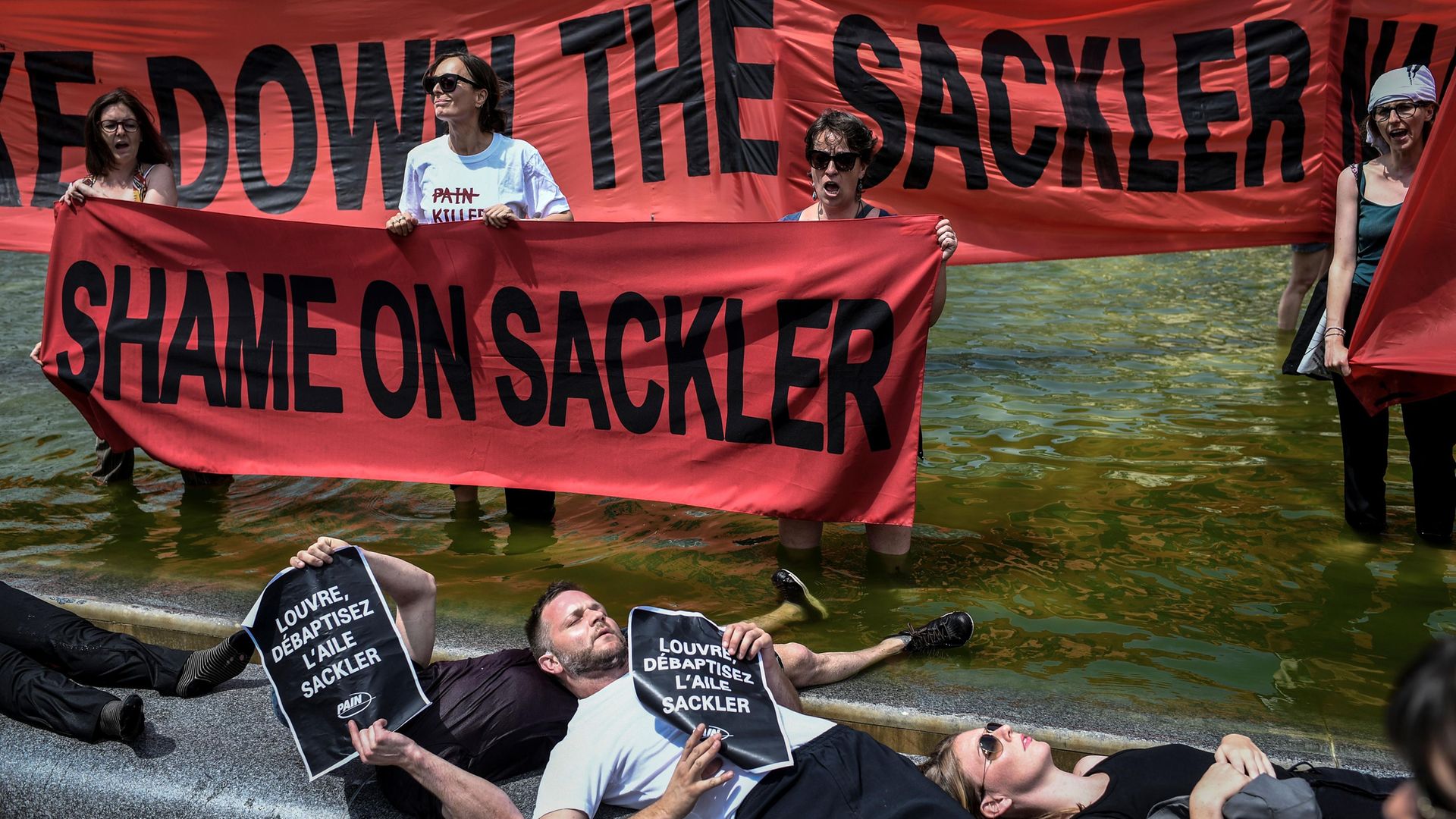
What separates the Sackler Family from the Chambers Brothers, asks Will Self, as he ponders the differences between legal and illegal drug dealing
One of my favourite cultural books – if such a broad category can be summoned into being, after all, aren’t all books in some sense, cultural? – is Land of Opportunity: One Family’s Quest for the American Dream in the Age of Crack. In it, its author, William Adler, chillingly limns the rise to power of the Chambers family: the African-American brothers who brought crack cocaine to Detroit in the early 1980s, and in a few dizzying years built a criminal empire on top of a hecatomb of drug-related deaths, and several gulags’ worth of addictive enslavement to this most evanescent and putrescent of highs.
The Chambers’ story fits the right trajectory for the standard morality play: hubris and nemesis – but lest we get carried away with consigning them to the margins of Western society, Adler makes clear that their great success lay not just in sourcing and distributing illegal drugs, but also in a distinctly American mode of business practice. The Chambers employed motivational sales techniques in order to incentivise their dealers, and cost-cutting ‘super-size’ and ‘add-on’ promotions to entice their consumers.
The management told their sales force – which at one point was so numerous, they were operating out of an entire ten-storey former office block in the burnt-out downtown – to always be courteous to their zombified clientele with sales patter like this: “They may have come here with the family’s last five dollars, money they should be spending on food or diapers for the baby that they’re going to spend on crack for themselves – and you want to make them feel good about that decision.”
Drugs, licit and illicit, are a hugely important part of any society’s culture. The rituals associated with consuming them standardise our experiences – whether it’s a hen night, a chem-sex session or a vicar’s drinks party – while their impact on the economy is quite simply, colossal. Some economists hypothesise that what really averted the meltdown of the world economy in 2007-8 was the ‘reserve bank’ of vast amounts of US dollars held by the N’drangheta and Sinaloa criminal cartels. Having grown fabulously rich in the heroin and cocaine trade respectively; and richer yet by swapping their merchandise with one another, these Italian and Mexican crime bosses were able to inject valuable liquidity into the glocal economy at a time when more orthodox banking had been revealed for the smoke-and-mirrors Ponzi scheme it truly is.
But it’s in the porous barrier between legal and illegal drugs that we find the most telling impact on our culture – here hypocrisy reaches dizzying vertiginous heights of collective delusion, and the motivations of some of our most august institutions and eminent individuals are exposed as being no better than those of the benighted Detroit crack-heads. It’s been a good three years to bury bad news for the Sackler Family: the pseudo-medical dynasty of drug manufacturers who have the dubious distinction to’ve fomented both the benzodiazepine (Valium and Librium) addiction epidemic of the 1970s and the opioid one of the 2000s.
The Sacklers have made many billions of dollars out of not just manufacturing and distributing highly addictive drugs, but, in common with the Chambers, employing techniques that united hard drugs with the hard sell. Crunching the data, they targeted their ‘hillbilly heroin’ at doctors who had the most patients suffering from chronic pain, while bribing the government regulators to accept the nostrum that they weren’t habit-forming because the Sackler-patented slow-release coating meant there was no instant high for the patient/user. The result was hundreds of thousands of deaths, millions of lives blighted by addiction.
All this is detailed chillingly and exhaustively in Patrick Radden Keefe’s Empire of Pain: The Secret History of the Sackler Family, published in April of this year, and which makes a fitting companion to Adler’s book. 26 years have passed since the former work was published, but when it comes to drugs, plus ça change. The Black Lives Matter movement and the focus on reparations for the depredations of colonialism and chattel slavery have averted our eyes from the extent to which our cultural institutions are built on a mound of drug-dealing dosh. Just as criminals launder their money, so they also attempt to clean up their image.
Some of the multitudinous British institutions that received this ‘philanthropy’ have quietly divested themselves of the Sackler name formerly slapped across their galleries and libraries, but none so far as I’m aware has handed back the ill-gotten loot, whether this took the form of cash, or bequests of the antiquities that the family amassed pursuing pharaonic immortality through time-release pharmaceuticals. And of course, OxyContin is still on the market.
“When I hear the word “culture” I reach for my gun,” is a sentiment widely attributed to Hermann Göring – but then he knew a thing or two about both hypocrisy and addiction, being a looter of artworks as well as a junky. Our museums are full of stuff either stolen from other peoples or ‘donated’ by drug dealers. Perhaps we should unite the worlds of addiction and connoisseurship together at once less and more euphemistically, by renaming them ‘shooting galleries’.
What do you think? Have your say on this and more by emailing letters@theneweuropean.co.uk
Warning: Illegal string offset 'link_id' in /mnt/storage/stage/www/wp-includes/bookmark.php on line 357
Notice: Trying to get property 'link_id' of non-object in /mnt/storage/stage/www/wp-includes/bookmark.php on line 37







